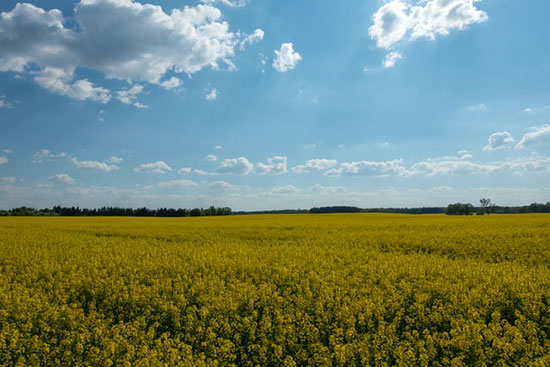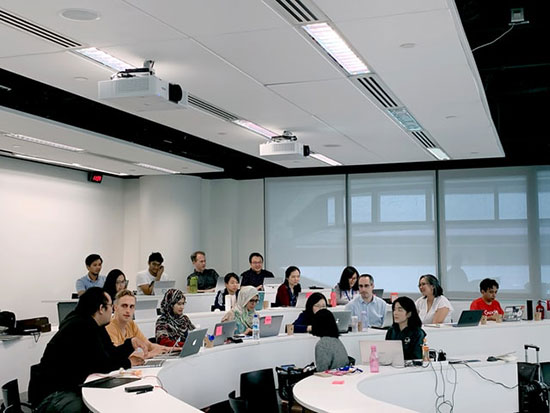Biodiversity is as fundamental for our organizations as it is for the natural world. Where there’s more diversity, there is more Life and movement. But there are also greater chances for conflicts to arise. Here’s why we should embrace conflict, rather than avoiding it.
Diversity and Inclusion Without Including Biodiversity
Is it just me?
I’m wondering why we use the term biodiversity so much when we talk about the natural world. And so little when we talk about organizations – simply using diversity instead.
While I don’t have an exact answer, I have a clue.
I’m almost certain Wahl and other folks from the Regenerative Movement would say it’s because we’re still living in this separation narrative where there is men and then there is Nature.
We urgently need to look at them as the same and improve corporations’ diversity. For our own sake. For the sake of our organizations. And for the sake of our planet.
The Environmental Impacts of Simple Monoculture Production On the Land

I’m also curious why we speak so much of monocultures in an agricultural context. As if these very same monocultures do not surround us in our personal and professional lives.
Science tells us monoculture crops can dramatically change the environment and have negative impacts on the soil.
They helped feed a great number of people in proportions and within a time range that would otherwise be hard to achieve.
In fact, it’s hard to say with confidence whether we would have had more hunger, rather population growth if the Haber-Bosch process had not been discovered in the early 20th century.
Monoculture crops have been a widely implemented agricultural practice, as they are easier to manage and to control.
Not to mention it is cheaper to harvest using the same machinery than buying different ones and having to learn about the plagues and challenges of different species.
It’s more profitable and easier to control, then.
However, many studies have been increasingly showing how monocultures have been leading to habitat loss and fragmentation, decreasing biodiversity, and negatively impacting soil and water quality and availability.
From a social perspective, there’s also a link between today’s mainly industrial and monoculture-based agriculture and increased mechanization and farmers whose economic returns got reduced.
Summing it up because there’s another point to make: once upon a time, we might have needed it. But today, there are no doubts that the greater the crop diversity, the better.
At least, from an environmental perspective.
But how about people diversity?
And I’m not talking about the more obvious differences such as sex, race or age – the so-called surface-level diversity.
I mean the diversity of ideas, beliefs, backgrounds, education and ways of perceiving reality we could call deep-level diversity.
I guess intuitively and also because it’s a socially pleasant thing to say, you and I would both agree a greater diversity inside organizations is a good thing.
But then again, we don’t have to guess – there’s science backing it up too.
Diversity Benefits: More Resilient, Productive and Creative Organizations
In Triana’s book Managing Diversity in Organizations: A Global Perspective, she quotes authors who highlight several benefits diverse teams can bring.
Some present arguments showing diverse teams have a greater ability to better market products in foreign countries and to domestic subgroups of the population
Not to mention the value of their knowledge about local laws, norms and cultures.
Then there is the argument that the greater the diversity, less rigid and more fluid organizations become. Together with an enhanced ability to produce better decisions thanks to a wider range of perspectives.
Other studies show how diversity in the workplace enhances employee critical thinking and problem-solving. Besides helping to attract talent – improving employer branding and organizational productivity.
All this diversity presents a great opportunity for organizations to innovate and improve their performance, both domestically and abroad. But it also presents the challenge of managing diversity well in order to get the benefits of a diverse workforce.
However, this is not always the case.
Diversity Challenges: We Can Feel Threatened and Insecure

A lot of hostility, disrespect, and discrimination still exist today. And not just at the workplace, but a little everywhere.
Such attitudes are often born from prejudices and biases towards people with varied lifestyle choices, ethnic and cultural differences, disabilities, and generational gaps, Cletus et al. mention.
It’s hard to innovate without diversity and conflict – Linda Hill, a professor from Harvard Business School says. She tells many people don’t even want to deal with conflict and diversity.
But how important is it really that we can navigate through conflict? Being able to calmy and openly discuss and share our personal views and the reasons (often personal) behind our disagreements?
Many business and political decisions need to be taken and implemented globally if we are to create a healthier planet and fairer societies.
But how well prepared are the world’s “leaders” to accept different surface and deep-level diversity? Different worldviews, different priorities and goals and navigate through conflict having a global consensus in mind?
Will they, and ourselves – both at home, at work and in between – be able to celebrate our diversity rather than jumping straight to making mental simplifications of reality?
Without judging those different from us and create a borderline separating the other from us?
Or will we find our differences too uncomfortable and challenging?
Embracing Diversity and Conflict To Design a Sustainable World

Gaia Education’s Social Design Dimension training teaches us conflict is inseparable from life and diversity.
That where there is homogeneity, there is less conflict and less tension, but there is also less movement and less life. This is true for the natural world – as we’ve seen with monoculture lands – but also within our social and professional groups.
We must learn how to support and appreciate diversity – a key component of life’s evolution and vitality on Earth.
And doing so while we learn to recognise the unity underlying the apparent diversity, so we can live with the differences, maybe with tension and difficulties, but without violence, aggression or(self-)destruction (Gaia Education, 2020).
To truly welcome diversity, equity, and inclusion in all parts of our lives requires that we become willing to walk toward conflict.
Because within conflict are the keys to unlock the “leader” in each of us, the power in our diversity, our connectedness, and what matters most to us.
How can we do this?
Well, that’s a story for another time.
For this time, let’s acknowledge how we need biodiversity to get us out of the social, environmental and economic challenges we’re facing.
And how we need to learn to navigate conflict to achieve this.
[Photos by Christina, Etienne Girardet, Markus Spiske and CX Insight on Unsplash]

